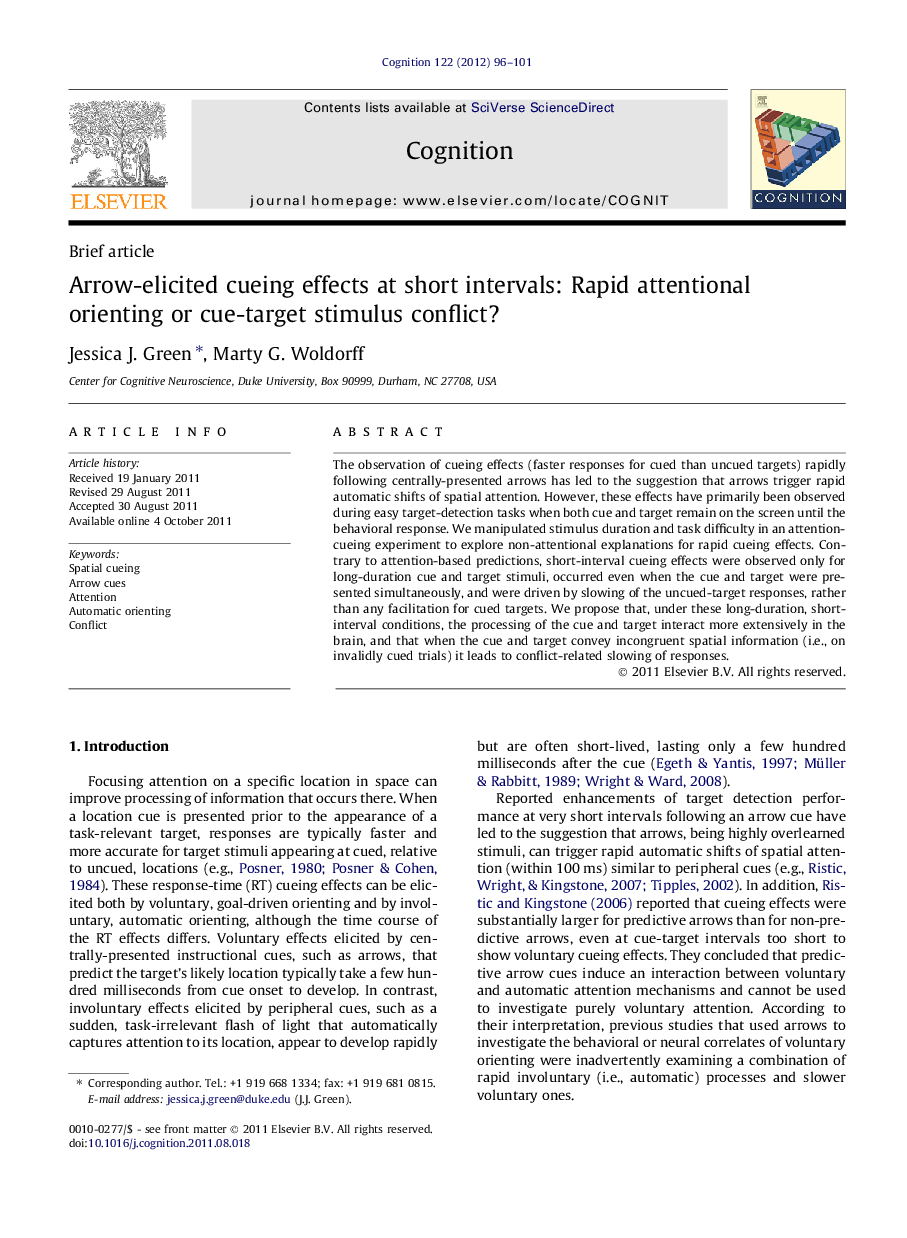| Article ID | Journal | Published Year | Pages | File Type |
|---|---|---|---|---|
| 926944 | Cognition | 2012 | 6 Pages |
The observation of cueing effects (faster responses for cued than uncued targets) rapidly following centrally-presented arrows has led to the suggestion that arrows trigger rapid automatic shifts of spatial attention. However, these effects have primarily been observed during easy target-detection tasks when both cue and target remain on the screen until the behavioral response. We manipulated stimulus duration and task difficulty in an attention-cueing experiment to explore non-attentional explanations for rapid cueing effects. Contrary to attention-based predictions, short-interval cueing effects were observed only for long-duration cue and target stimuli, occurred even when the cue and target were presented simultaneously, and were driven by slowing of the uncued-target responses, rather than any facilitation for cued targets. We propose that, under these long-duration, short-interval conditions, the processing of the cue and target interact more extensively in the brain, and that when the cue and target convey incongruent spatial information (i.e., on invalidly cued trials) it leads to conflict-related slowing of responses.
► Rapid arrow cueing effects previously attributed to rapid attentional orienting. ► We observed rapid effects only for long-duration cue and target stimuli. ► Largest effect when target simultaneous with cue, before attention can shift. ► Effects reflect slowing for invalidly cued targets, not speeding for valid targets. ► Effects attributable to cue-target spatial conflict rather than attention orienting.
